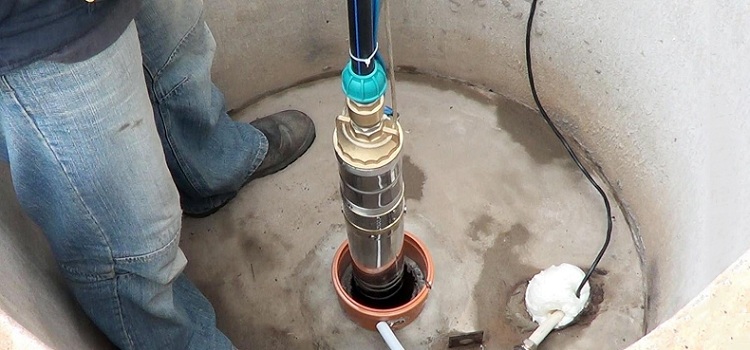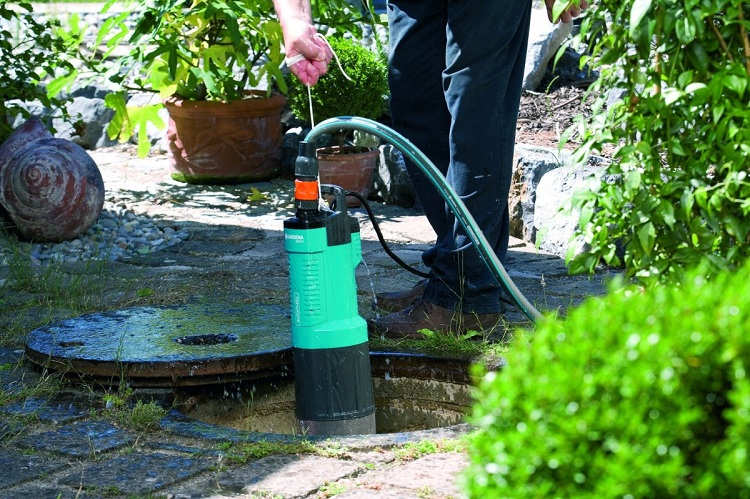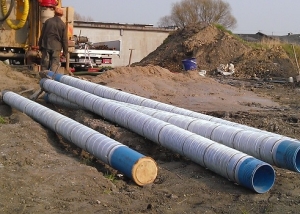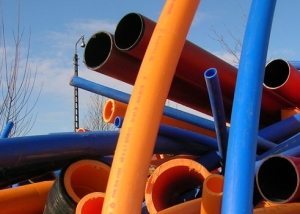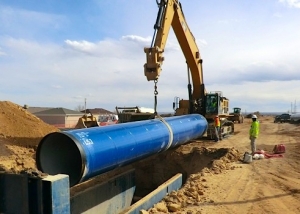Water-lifting pipes for water wells connect the submersible pump and the well head. They perform the function of transporting water from the depth of the soil to the surface. Casing pipes for wells serve to create a protective framework for the well. Although these two types differ in their functionality, the materials from which they are made are the same. Namely: steel (stainless, black or galvanized), polypropylene, polyethylene, polyvinyl chloride (PVC). Such pipes are single and multilayer.
Content
Types of water pipes by material
The reliability and characteristics of pipes depend largely on the material from which they are made.
Steel. Until recently, steel pipes were the most popular when installing water sources. Durable material made it possible to use them even in soils with high mobility. However, they are quite susceptible to the harmful effects of corrosion, which is a big minus, but not the main one. Rust in drinking water can be dealt with using special filters. The determining factor by which customers are increasingly choosing plastic pipes as an alternative to steel pipes is, of course, the price. The high cost of steel material does not allow them to maintain a leading position in the market.
The effect of corrosion on the walls of the product is usually so small that a simple galvanic coating is sufficient for the pipe for long-term service. Parts that have nevertheless been corroded must be replaced. However, if the corrosion has not caused much harm, then you can continue to operate, placing the column above the groundwater level.
Asbestos-cement structures. Used for installation of wells for more than half a century. They have high strength and reliability. But such pipes emit harmful substances when interacting with water, thereby making changes in its chemical composition. Water from them can cause the development of various diseases, including oncology. In addition, they are bulky and inconvenient to install. The complexity of the installation and the lack of environmental qualities influenced the fact that people are increasingly abandoning this option.
Polyvinyl chloride products (PVC). They are distinguished by ease of transportation, installation, light weight, as well as a higher reliability indicator. In addition, they do not make any changes to the chemical composition of the water transported through them.
However, they also have their drawbacks. They can be used in wells with a depth of not more than 3 m.
Details from unplasticized polyvinyl chloride (NPVC). Such pipes for pumps located in wells have a higher reliability indicator. Their strength is no worse than that of steel counterparts. But they cost respectively more.
Plastic pipes. The main advantage of such products is their plasticity. Such pipes are able to bend and form the necessary structures, without much labor. When installing temporary wells, this is a very important factor.
Copper. Copper pipes are an expensive option, but at the same time one of the most durable and reliable. They can be used without fear of consequences in moving soils.
Polypropylene. A well with such pipes is the most attractive option for the buyer. Polypropylene pipes are the easiest to mount. Moreover, for installation, practically no special tools are needed.
The best option for installation in wells are HDPE pipes. The fewer connections between the PND parts, the lower the chance of a pipeline breakthrough and the greater the overall structural strength. In addition, corrosion resistance and attractive price make these pipes the most popular among buyers.
Important! The submersible cable of the pump is recommended to be made 4–5% longer than the water pipe. The pipe is lengthened by the same load in the soil.
The parameters that you need to pay attention to when choosing pipes:
- diameter of the future well and its depth;
- pump power;
- head height and equipment installation depth;
- exposure to corrosion;
- cost.
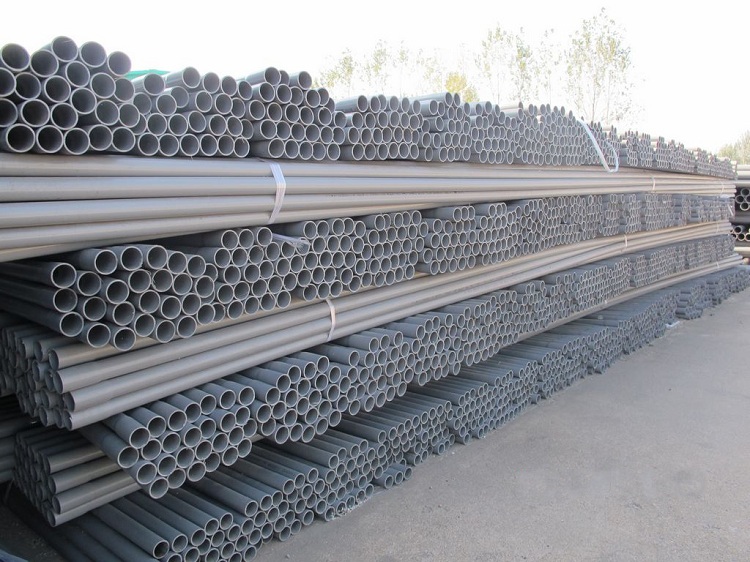
For a household well in a personal plot, it is enough to purchase a pipe with a diameter of 30 to 50 mm
The mass of the water-lifting equipment should be as small as possible, and the rigidity sufficiently high. It is for these indicators that a pipe for a downhole pump is usually selected. The diameter of the product is selected, focusing on the depth of the well and the characteristics of the pump. The most popular pipes with a diameter of 40 and 50 mm.
Types of pumps
The rise of water from the wells is carried out using different types of pumping equipment. There are manual and mechanical pumps. They, in turn, are subdivided into subclasses.
Hand held
Manual devices can be rod and piston. Rods are used if the height of water transportation is more than 7 m. Piston, respectively, with a smaller depth of the well.
- Sucker rod pump. The composition of such a device includes: a pump cylinder, which is mounted at the end of the water-lifting system, a set of rods with a piston, a manual drive mechanism located on the surface of the well.
- Piston pump. A device of this kind is very similar to the rod type. But there are differences. The main characteristic of a piston pump is its working depth (not more than 7 m). A piston pump is mounted at the end of the riser pipes. Typically, installation is carried out at about one meter from the ground.
Mechanical
To deliver water from wells to the surface, the following types of mechanical pumps are used: centrifugal, gear, and electromagnetic.

Most domestic wells are equipped with conventional centrifugal pumps that do not require large diameters
Each type has its own characteristics:
- centrifugal devices are made of stainless steel. Their electric motor has protection against "dry running";
- electromagnetic pump. This type of device does not require lubrication, and also does not have rubbing surfaces and parts that rotate. Immersed directly in the water;
- hydraulic pump. Requires a steady, uninterrupted power supply for its work
Installation steps for pumps and water pipes for wells
Pumps are available with threaded and flanged pipe connections. The size of the pump assembly is small, so it is recommended that you first install the pump with a 50 cm pipe. This procedure will greatly simplify further installation. The other (free) side of the pump can be fixed with brackets for the time you need, to carry out all the necessary work. Then a second pipe is attached to this free side. In no case should the device be lowered to the ground, otherwise important parts for its operation may be damaged.
Advice! When performing the calculations, it is advisable to immediately determine the amount of water necessary for the needs of the suburban area.This will simplify further calculations and solutions to controversial issues during the installation of the well.
The amount of produced water is primarily affected by the size of the source. The larger the well, the more water it will deliver to the surface. Therefore, before you start drilling, you need to make all the necessary calculations to determine the desired diameter of the well that will meet your water needs. When determining the diameter of the well, the dimensions of the pump that will be installed in it must also be taken into account.
Plastic water pipes are rarely used for installation in a well with a professional approach to a water supply device. This is because the fittings with which these pipes are connected to each other are usually made of brass and bronze, and these metals can affect the chemical composition of water. Lead appears in such water.
Water may have a high corrosion coefficient. In such cases, it is recommended to use flexible pipes or hoses to lift it. And the binders for such products are best chosen from stainless steel.
Attention! Hoses for water pipes must be durable, made of good material. Do not use nylon or fire hoses, for example. Such hoses will quickly deteriorate, as a result of which there may be a problem with the pump falling to the bottom of the well. In order not to do all the drilling and installation work again, it is worthwhile to carefully select all the necessary equipment.
In addition, do not forget that the pipes for lifting water can be corrugated. It is always necessary to take into account the roughness of parts when working with calculations.
A water-lifting pipe for wells has a huge number of varieties in terms of the material from which it is produced and its properties. When choosing it, you must be very careful or consult with experts, because the volume and quality of water that you will use for your needs (including eating) depends on this. With self-assembly of the well, without specialists, it is before starting work to study the nuances of work at all stages. It will also be useful to read useful tips that will help simplify your work. If you take the selection of the necessary equipment and its installation with all seriousness, then such a design will turn out to be reliable and will last you more than one year.
